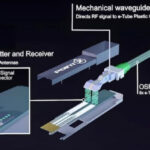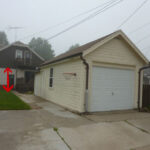Running overhead electrical wire is one of the most common methods for delivering electricity to homes, workshops, and outbuildings. Unlike underground wiring, overhead systems are easier to install, more affordable, and simpler to maintain. However, because they’re exposed to the environment, proper planning and safe installation are critical.
This guide walks you through how to run overhead electrical wire safely — from choosing the right materials to following key safety standards and local regulations.
When to Use Overhead Electrical Wiring
Overhead wiring is typically chosen when:
Cost efficiency is a major factor (overhead runs are cheaper than underground installations).
Short distances are involved — for example, connecting a main power pole to a nearby building or garage.
The ground conditions make buried cables impractical, such as rocky or flood-prone areas.
Despite being exposed to weather, overhead systems can last decades if properly installed using high-quality materials like UV-resistant cable and corrosion-protected hardware.
Materials You’ll Need
Before beginning the installation, gather these essential materials:
Triplex service drop cable (for single-phase residential connections)
Messenger wire or steel support strand (if not included in cable)
Insulators or dead-end clamps
Weatherhead (service mast head)
Conduit and fittings for entry into the structure
Pole hardware such as brackets, bolts, and tension grips
Grounding wire and rods
Personal protective equipment (PPE) — gloves, helmet, safety glasses
All components should be UL-listed and rated for outdoor, aboveground electrical service.
Planning the Overhead Wire Route
Start by planning your wire route carefully:
Check local electrical codes — different regions have specific clearance and height requirements.
Measure the span length — between the utility pole and the building’s service mast.
Determine clearances:
Minimum 10 ft (3 m) above sidewalks
Minimum 12 ft (3.6 m) above driveways
Minimum 18 ft (5.5 m) above public roads
Avoid running wires over swimming pools, patios, or areas with heavy tree coverage.
A properly tensioned and supported span prevents sagging and reduces mechanical stress on the conductors.
Step-by-Step Installation Guide
Step 1: Mount the Service Mast or Pole
Install a service mast or rigid metal conduit (RMC) on the side of the building high enough to meet clearance requirements. Secure it firmly to the structure.
Step 2: Install the Weatherhead
Attach a weatherhead (also called a service entrance cap) to the top of the mast to protect conductors from rainwater entering the conduit.
Step 3: Attach Insulators or Anchor Hardware
Mount porcelain or polymer insulators on poles or walls to support and terminate the overhead conductors.
Step 4: String the Overhead Wire
Pull the triplex or quadplex cable across the span. The messenger wire (either steel or an integrated neutral conductor) should carry the mechanical load.
Use dead-end clamps or preformed grips to anchor each end securely.
Step 5: Connect to the Weatherhead
Feed the conductors through the weatherhead into the service conduit. Make sure drip loops are formed — these downward loops prevent rainwater from following the wire into the conduit.
Step 6: Grounding and Bonding
Install a proper grounding system using ground rods and bare copper wire (often #6 AWG). This protects against lightning and ensures system safety.
Step 7: Make Final Electrical Connections
Inside the main service panel, connect the conductors to the appropriate terminals — hot, neutral, and ground — following the National Electrical Code (NEC) or your local equivalent.
Safety Considerations
Working with electricity at height is dangerous. Always follow these safety principles:
De-energize circuits before touching any wires.
Keep a safe distance from existing utility lines.
Use nonconductive ladders and properly rated insulated tools.
Never install overhead lines in wet or windy conditions.
If in doubt, hire a licensed electrician for the connection to the utility service point.
Overhead vs. Underground Wiring
While overhead lines are easier to install and maintain, underground wiring provides better protection against weather damage and improves aesthetics.
| Feature | Overhead Wiring | Underground Wiring |
|---|---|---|
| Cost | Lower | Higher |
| Maintenance | Easier | More complex |
| Weather Resistance | Exposed | Protected |
| Installation Time | Shorter | Longer |
| Aesthetics | Visible | Hidden |
For most rural or temporary installations, overhead systems are still preferred. In urban or high-end residential developments, underground power lines are more common.
Conclusion
Running overhead electrical wire is a practical and cost-effective way to deliver power — especially for short spans and outdoor structures. With proper planning, correct materials, and attention to safety, you can build a reliable connection that lasts for years.
Before starting, always check your local electrical codes and coordinate with your utility provider to ensure compliance and safety.
⚡ Reliable Overhead and Underground Cable Supplier
At TOT Wire & Cable, we provide durable, high-quality overhead and service drop cables, including AAC, ACSR, AAAC, and triplex service wire for residential and industrial applications.
📞 Contact us today to find the right cable solution for your project — combining safety, performance, and value.





